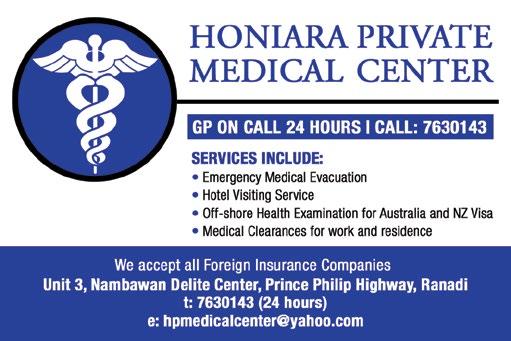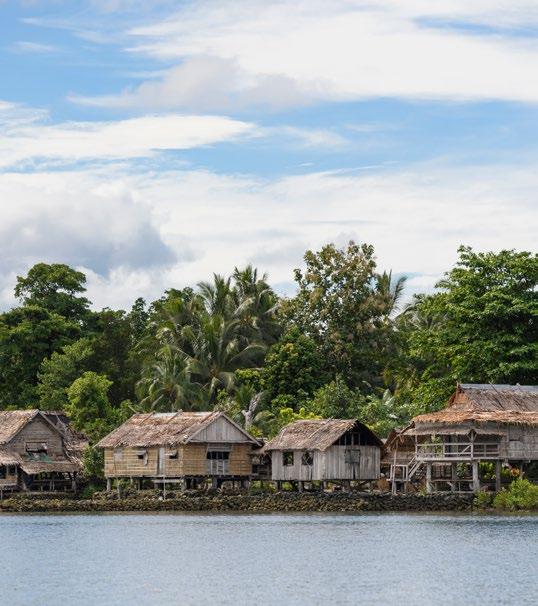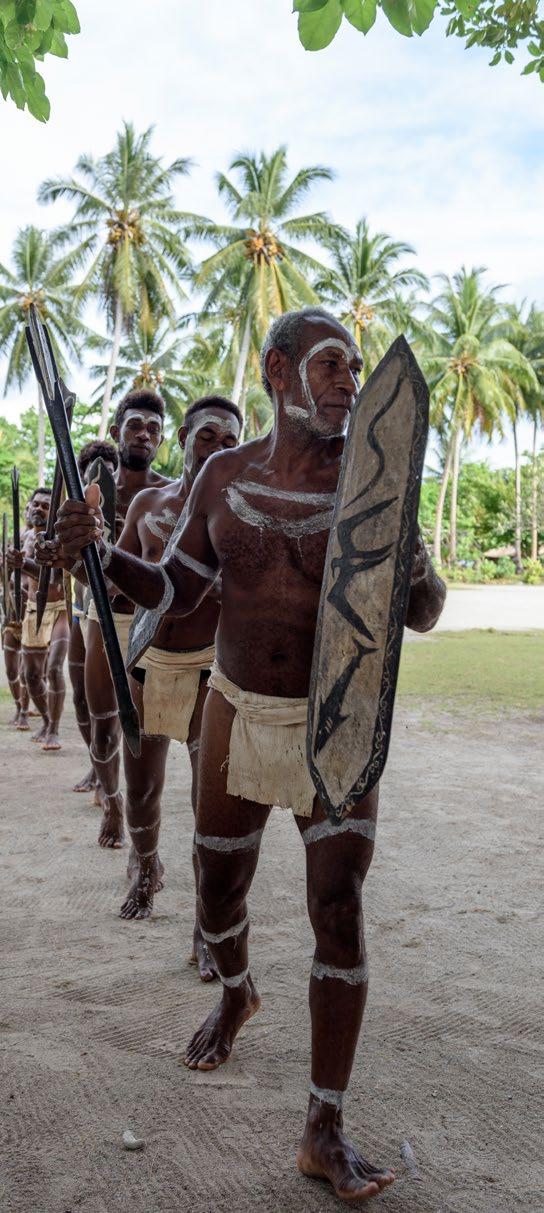SOLOMON ISLANDS
ATTRACTIONS - MAPS - EVENTS - SERVICES
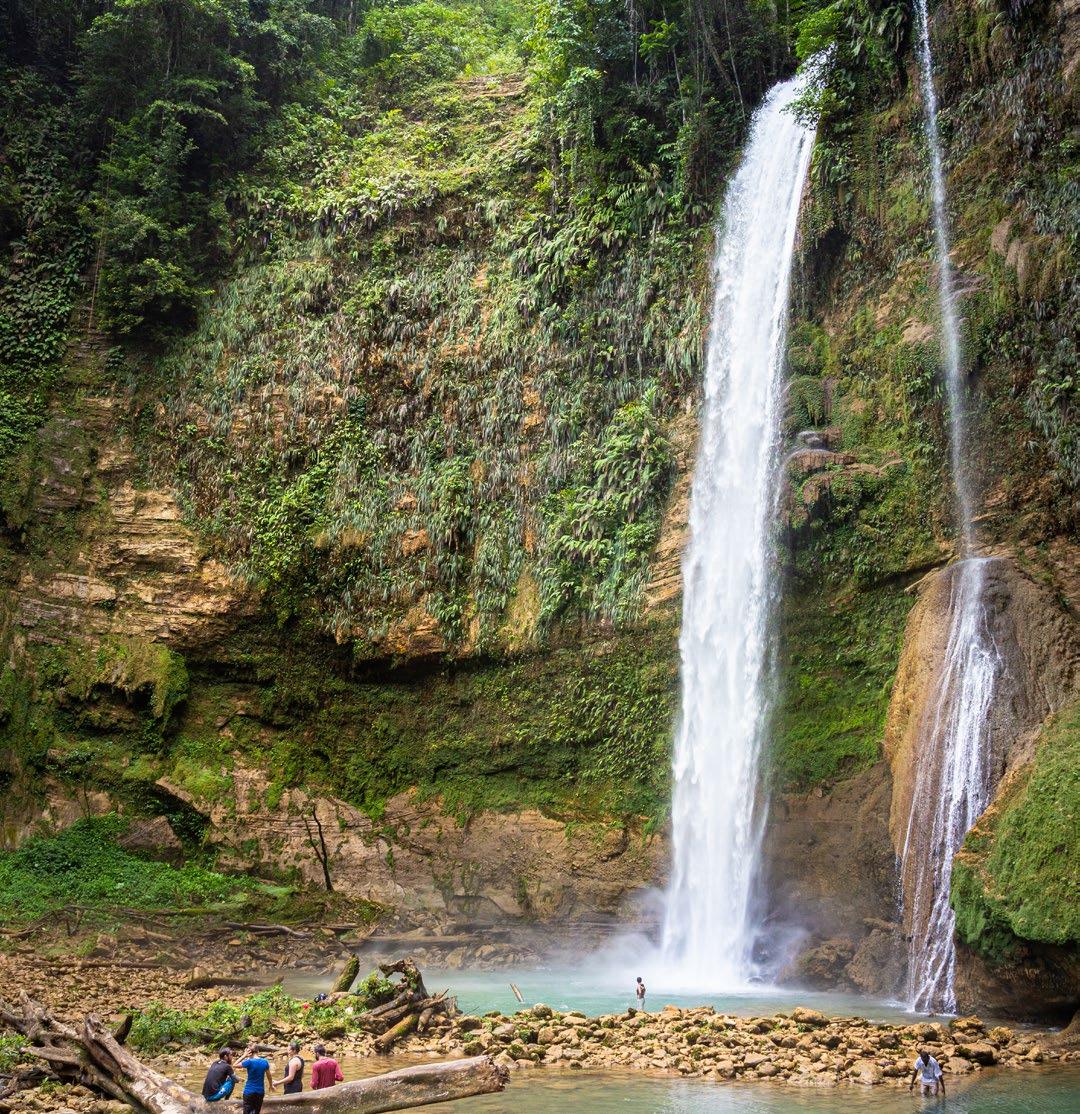
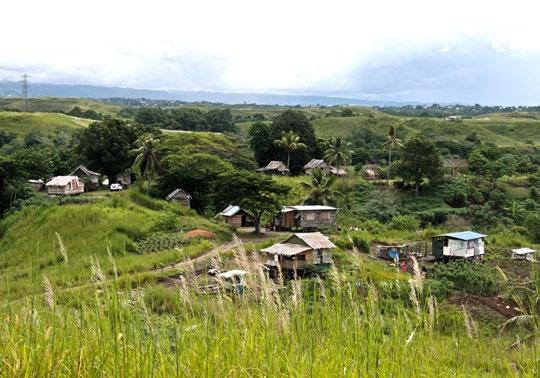
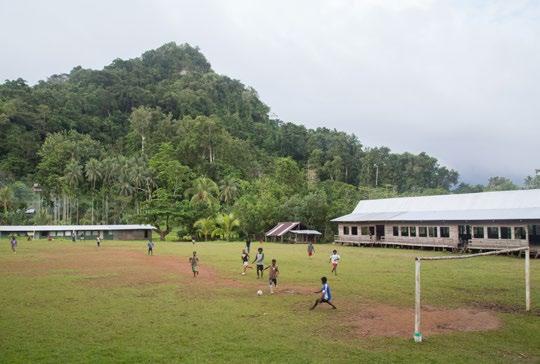
welcome TO the
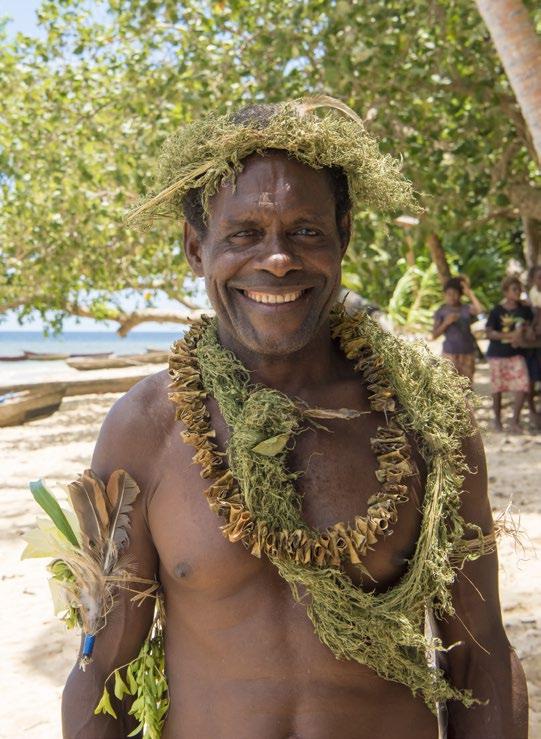




welcome TO the

If this is your first time visiting the Solomon Islands, prepare to be captivated by its natural beauty and the warm-hearted spirit of its people. This stunning archipelago offers a journey not only through breathtaking landscapes, but also through time, into a world where ancient traditions still thrive, and community life remains at the heart of society.
With its pristine waters, untouched rainforests, and remnants of a deeply significant war history, the Solomon Islands feel like a place where time has stood still. You haven’t just travelled to another destination, you’ve stepped into a rich cultural tapestry, where stories are passed down through generations and the land itself holds deep meaning. And we promise, you will not be disappointed.
The islands were first settled over 4,000 years ago by the Melanesian people, whose customs and values still shape daily life. Villages are nestled in small, remote pockets across the region, each with its own language and strong communal ties. In Solomon Islands culture, wealth is not measured by what you own, but by what you give. Generosity is woven into the fabric of everyday life, and it’s not uncommon for a Solomon Islander to go out of their way to help a visitor or neighbour in need.
There are nine provinces that make up the country: Central, Choiseul, Guadalcanal, Malaita, Makira and Ulawa, Rennell and Bellona, Temotu, Western, and Ysabel. Guadalcanal is perhaps the most well-known, as it is home to the national capital, Honiara, a lively gateway to the rest of the islands.
In total, the Solomon Islands comprise 992 islands, 347 of which are inhabited. Over 90% of the land is blanketed in lush, tropical rainforest. Nature lovers will find themselves in paradise - there are more than 4,500 plant species, including over 230 types of orchids.
Birdwatchers can delight in spotting some of the 173 species found here, including 69 unique to the islands. And yes, this is also the surprising home of a rarely-seen giant rat, long rumoured and only recently confirmed!
Whether you’re here to dive into vibrant coral reefs, explore historical WWII battle sites, trek through jungle trails, or simply relax in a peaceful village, the Solomon Islands offer countless opportunities for discovery and connection.
Please note that tap water here is not safe for drinking, so always use bottled or boiled water during your stay.
Welcome to the Solomon Islands. We hope your time here is filled with unforgettable experiences and the kind of beauty that stays with you long after you leave.
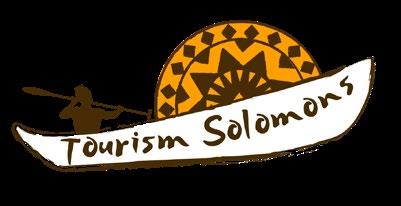
In a country comprising of 992 tropical islands and atolls, life is serene, idyllic and revolves around family values and care for others.
Solomon Island villagers toil away, living a simple life where visitors are made to feel welcome; where locals pride themselves on friendliness and hospitality.
The Solomon Islands are called the ‘Hapi Isles’ for good reason. Here, when you walk in the street, you will be welcomed by those around you with a nod, a grin and bright smile that will warm your heart.
Solomon Islanders regard strangers as friends that have not been met and in the typical Melanesian way, will sit, talk, share food and friendship like long lost cousins who need to catch up on what has passed since the last get-together.
If you are visiting this country for the first time, you are in for an experience that is unique to this tiny part of the globe.
No matter if it’s diving, fishing, war history, hiking or just exploring, you will not be disappointed, and the memory of your visit will stay with you long after you leave our shores.
The Solomon Islands boasts the best diving in the world and each year, our home is visited by a small number of intrepid divers who seek to fulfill their lifelong goals to dive the clear waters which are home to thousands of species of underwater life.
WWII wrecks abound our pristine waters, while war relics are found across our islands, a reminder of times past when savage fighting from long distant lands came to our peaceful nation.
The Solomon Islands boasts untouched rainforests and clear oceans. Here, migrating fish come to breed and feast on the diverse produce created through the natural wonder of the famous Coral Triangle which stretches all the way to Philippines and across to Malaysia.
If you are here for a week or a month, we sincerely hope you enjoy your time with us.
Hon. Cholyin Yim-Douglas Minister for Culture and Tourism

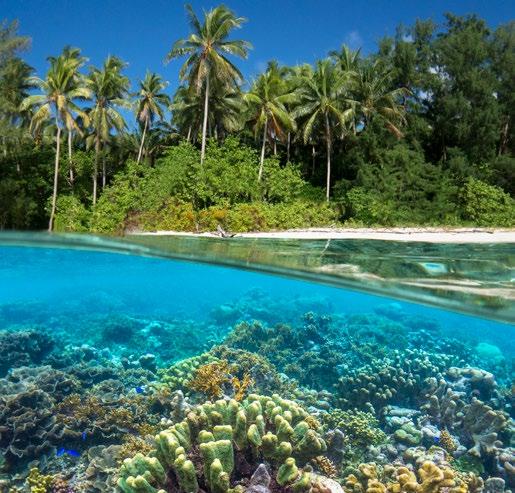


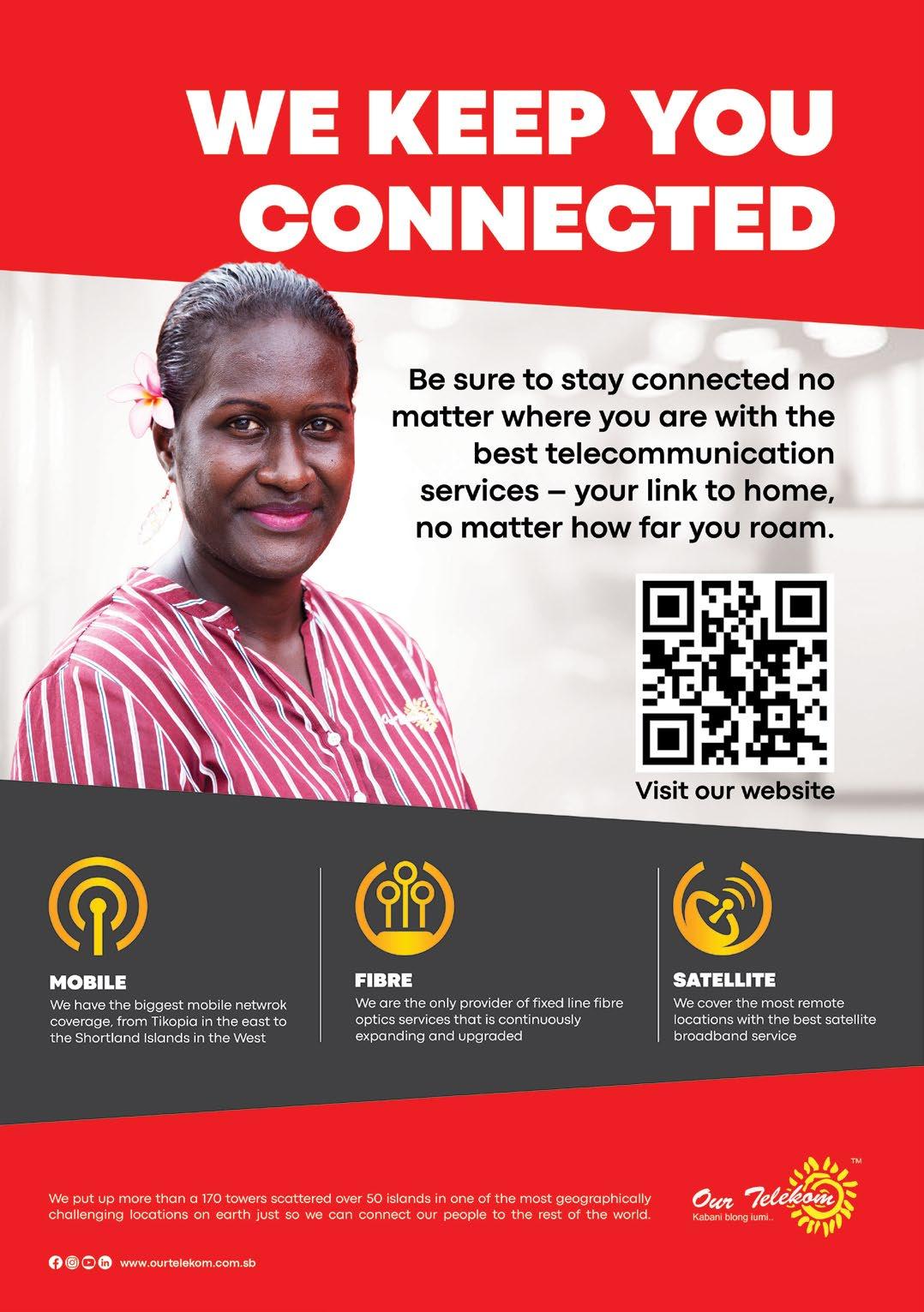



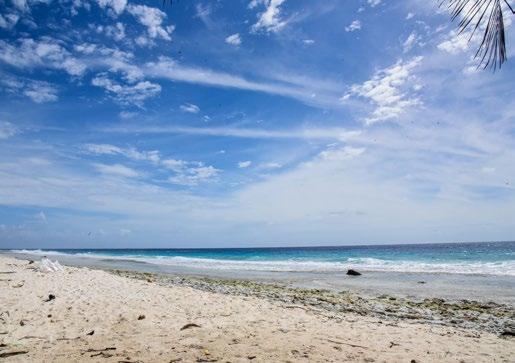
Adventure awaits in every corner of the Solomon Islands - dive vibrant reefs, hike volcanic trails, or simply unwind under the palms. However you explore, unforgettable moments are guaranteed.
The Solomon Islands played a major role in the Pacific campaign during World War II. On Guadalcanal, you’ll find battle sites, memorials, and museums that preserve this important chapter in history. Highlights include the Vilu War Museum, Bloody Ridge, and American and Japanese memorials near Honiara.
The islands offer some of the best dive and snorkel experiences in the South Pacific. Colourful coral gardens, deep walls, and WWII wrecks lie just offshore.
Popular dive spots include:
Munda – famed for coral reefs and bomber wrecks
Gizo – home to the famous Toa Maru shipwreck
Tulagi – technical dives and deep-sea history
With 992 islands to choose from, hopping between them is a must. Each one offers something unique, from lagoon escapes to forested interiors. Favourites include:
Gizo Island – laidback with beautiful beaches
Marovo Lagoon – the world’s largest saltwater lagoon
Rennell Island – home to UNESCO-listed Lake Tegano
The Solomon Islands lie on the Pacific Ring of Fire, boasting several active volcanoes that shape its dramatic landscape. Among the most renowned are Savo, Simbo, Tinakula, and Kavachi. Visitors can trek to Savo and Simbo, both smaller-scale volcanoes offering unique geothermal features like hot springs, steaming mud pools, and sulphur vents, a thrilling adventure for those interested in nature’s raw power.
Tinakula, an uninhabited volcanic island in the remote Temotu Province, regularly releases plumes of smoke and ash, visible from nearby islands.
Farther out at sea, Kavachi is one of the world’s most active submarine volcanoes, located south of Vangunu Island. While you cannot safely visit the volcano itself, you can take boat tours from nearby islands to view the spectacular steam and occasional eruptions rising above the ocean surface which are a rare and unforgettable sight.
You’ll never struggle to find a quiet stretch of sand. From the palm-fringed shores of Uepi Island to the white sands of Lola Island, the beaches in the Solomons are uncrowded, unspoilt, and unforgettable.
Just a short drive from Honiara, Bonegi Beach offers a striking contrast with its black sand and peaceful atmosphere. It’s also a renowned diving spot thanks to nearby World War II shipwrecks resting offshore, making it a unique destination for history buffs and underwater explorers alike.
While still off the mainstream surf radar, the Solomons offer some fantastic uncrowded waves. Santa Isabel, Malaita, and some areas near Western Province receive quality swells which are best accessed with local knowledge or a surf tour.
The Solomon Islands’ lush landscapes and abundant rainfall create stunning waterfalls throughout the region. Around Honiara, several easy-to-reach trails lead to beautiful cascades and mysterious caves. The waterfalls below are some of the most scenic and accessible, perfect for any visit.
• Mataniko Waterfall & Caves
• Tenaru Waterfall
• Barana Cave & Waterfall
• Borare Cascade
• Kahove Waterfall
Fishing
The waters are teeming with big game fish. Whether you’re deep-sea fishing or reef casting, you might catch tuna, mahi-mahi, giant trevally, or wahoo. Local guides can take you to their favourite spots across the provinces.
Birdwatching
Bird enthusiasts will be thrilled by the 69 bird species found only in the Solomons. Makira, Choiseul, and Kolombangara are top birding locations, with species like the Solomon Sea Eagle, the San Cristobal Shrikebill, and the elusive Megapode.
Cultural Village Visits
Engage with the rich traditions of Melanesian culture through village visits. Experience customary dancing, wood carving, shell money making, and local food preparation. These visits offer wonderful insight into a way of life rooted in community, generosity, and deepconnection to land and sea.
Markets are vibrant places to witness daily life. Try fresh tropical produce, admire handmade carvings, and sample street food. The Honiara Central Market is a lively and colourful hub, ideal for picking up locally made souvenirs.
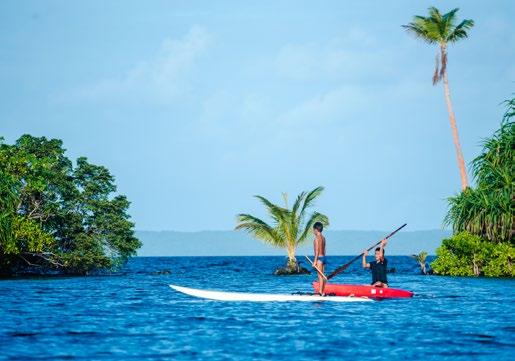

Friday 8:00am to 5:00pm - Saturday 8:00am to 12:00pm
Sunday 8:00am to 12:00pm



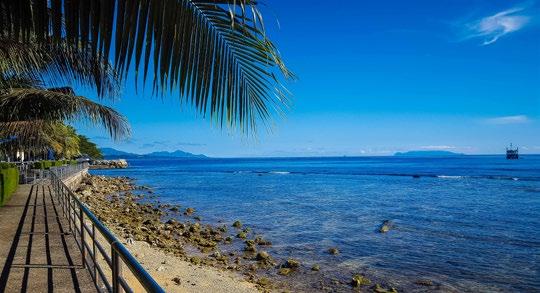
Honiara is the capital of the Solomon Islands. With a population of around 116,500 people, it reigns as the commercial hub of the region.
Honiara offers loads of interesting landmarks and museums to explore. The National Parliament located on Hibiscus Avenue boasts a diverse range of traditional art, while the National Museum and Cultural Centre on Mendana Avenue houses some fascinating cultural displays and imagery.
If you’re interested in war history, you can visit the US War Memorial located a 30-minute walk from Mendana Avenue. The memorial honours the lives lost in battles undertaken during the Guadalcanal Campaign.
Guadalcanal Travel Solomons organises day trips around Honiara, island and fishing tours, and cultural events in the region. For tours and bookings, call GTS on (+677) 22 586.
Public minibuses are available in town for a nominal fee and taxis cost SBD $10/kilometre. It’s common to agree on a fare beforehand with taxi drivers, as they may not have meters.
If you want to rent a car, contact AVIS in Honiara on (+677) 24180. Alternatively, if you want a fun way of getting around the island you can hire a bike and explore the region this way.

DINING OUT
Café Bliss
Point Cruz (+677) 7148 185
Capitana / Hakubai
Solomon Kitano Mendana Hotel (+677) 20 071
Casablanca Restaurant / Monarch Bar
IBS Monarch Hotel (+677) 28 633
Club Havana / Oasis Restaurant
Honiara Hotel (+677) 21 737
Fish Restaurant
HX9M+CQ2, Honiara
GG’s Restaurant / Terrace Cafe / Splash Bar & Grill
Heritage Park Hotel (+677) 24 007
Haydn’s Steakhouse
Coral Sea Resort (+677) 26 288
Palm Sugar Crafts Market Cafeteria
Art Gallery Crafts Market, Point Cruz (+677) 25 3333
Tenkai Sushi Café
Point Cruz (+677) 27 288
The Breakwater Cafe
Point Cruz (+677) 23 442
The Garden Bar & Restaurant
Pacific Crown Hotel, Kukum Highway, Honiara (+677) 45 086
As Japanese forces advanced on the Solomon’s, the Royal Australian Navy assembled an organisation known as the Coastwatchers.
The Coastwatchers comprised of colonial officers and European volunteers who were living in the Solomons to hide in enemy territory and report on Japanese activities. The initiative was implemented before American involvement in the Solomons.
The local Solomon Islander scouts were the eyes and ears of the Coastwatchers. For each one of the twenty or so volunteer Coastwatchers, there were many more Solomon Islanders hiding and feeding them. The Solomon Islanders spied on the Japanese and warned of Japanese patrols.
They also passed on intelligence to the Coastwatchers who in turn reported this to headquarters. The Coastwatcher organisation provided information that was critical to winning the battle for the Solomons.
The Monument on Commonwealth Street in Honiara depicts the efforts of the Solomon Scouts and Coastwatchers. Visiting dignitaries and Royals place wreaths at the base of The Monument to show their respect for the brave efforts of the Solomon Scouts. The most renowned scout was Major Jacob Charles Vouza.
A monument celebrating the life of Major Vouza can be seen outside the Rove Police Station.


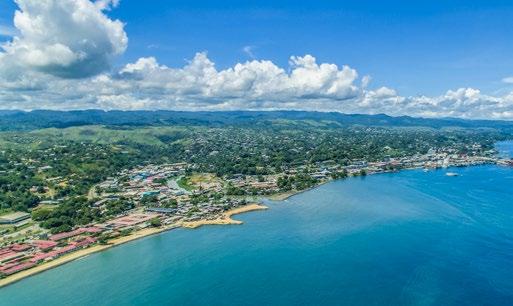
The average length of stay for visitors to Honiara is around 20 days and with so many islands, history and beaches, guests have no shortage of activities.
When you first arrive into Honiara, you might be a little overwhelmed with the city. The hustle and bustle façade of this little place doesn’t give you the true sense of just how relaxed and peaceful it is.
If you’re in Honiara, you can drive just 30 minutes west to Bonegi Beach to swim, picnic, snorkel and dive. There are two Japanese war wrecks here, the Hirokawa and Kinugawacommonly referred to as Bonegi I and Bonegi II. Rainbow coloured coral and rare fish species are abundant in the region, so you won’t be disappointed by a snorkelling or dive adventure.
Apart from Bonegi, there is Turtle Beach, Lela Beach, Kakombona Beach and more. Take a drive along the main road west and you will see small signs dotted here and there which will reveal beautiful spots to swim and relax.
There is a fee of around SBD$50 per car associated with using beaches, which is generally paid on departure.
The fee supports the local community and helps to maintain the beaches. Please ensure that you keep your vehicle locked when unattended.
If you don’t have transport, there’s a number of small operators that will take you out to local beaches on short notice. Ask at reception for recommendations.
If you are more interested in just visiting a beach for a walk and to look around, try Alligator River which was the home of one of many of the Americans in WWII and where the Japanese met them head on. The Americans greatly outnumbered the Japanese with tragic consequences.
Spend a leisurely day in Aruligo, situated further west of Honiara. Kick back and relax on hammocks by the beach, or swim and take in some snorkelling.
Fishing is also available for anyone keen to see what the waters have to offer.
Southwest past Cape Esperance, you’ll encounter the village of Tambea, the home to a landmark monument which commemorates those who died during the Guadalcanal Campaign. The area also serves as the exit point where 10,000 Japanese soldiers left Guadalcanal.
Not too far from Tambea’s shores, the I-1 Japanese submarine offers great diving. Grounded by the Royal New Zealand Navy in 1942, this fascinating historical relic now showcases a kaleidoscope of colourful fish and coral which call the submarine home.

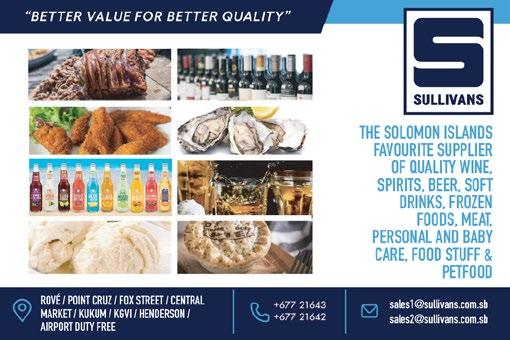

Solomon Islands is has some of the most flavoursome cocoa beans in the world, known for its unique and
fine flavours.
Cathliro produces distinctive cocoa-based products that are exported worldwide. The cocoa beans are sourced locally to support small cocoa farming communities and utilise natural production processes to ensure that not only are the chocolates delicious, but also promote sustainable practices and contribute to the local economy.
In 2009, Diana Yates and Thomas Chan embarked on a remarkable journey in the cocoa industry with the establishment of their company. Cathliro, aptly named after their four children, Cathy, Thomas, Lily, and Rosana, the company’s foundation is rooted in the values of family, unity, and shared purpose.
Cathliro is deeply committed to supporting local farmers and ensuring the highest quality of its cocoa beans and only the finest beans make their way into production.
A lot of detail goes into the process of transforming sun-dried beans into chocolate bars and Cathliro’s products use only natural ingredients and are free from artificial additives or preservatives. The product range includes chocolates with varying percentages of cocoa content, cooking chocolate, chocolate bars and cocoa powder.
Visit Cathliro’s Chocolate Haus at Honiara Hotel, China Town and try Solomon’s locally produced chocolates, cakes, hot chocolate, coffee cheesecakes and cocoa husk tea.
There are ninety local languages spoken in the Solomon Islands with English and Pidgin being the official languages.
While English is spoken in education, business and government circles in the Solomon Islands, most of the traditional South Pacific languages still endure today.
Melanesians speak a number of languages, including Ples Tok (the language of their home village), Pidgin, English and other local languages that are often learnt by virtue of moving villages during the course of marriage and so forth.
If this is your first visit to a South Pacific country, then be enchanted by the language called Pidgin, Bislama or Tok Pisin.
In the 1800s, traders known as blackbirders lured Solomon Islanders onto ships which were destined for the canefields in Australia. Here they were used for labour on the plantations. Pidgin was used by the European overseers to communicate with the labourers.
Many Pidgin words are easily translated if you speak English, but don’t take this for granted. Like all languages, grammatical rules exist in Pidgin. For example, “Fla” is used in front of most nouns and follows adjectives; so to say “the big house” you would say “big fla haus”. Nonetheless, there are exceptions to the rules. Some adverbs are formed by using two words, such as the word for “little” which is “lik lik”. With these types of words you do not use “fla”. To say “little house” you just say “lik lik haus”.
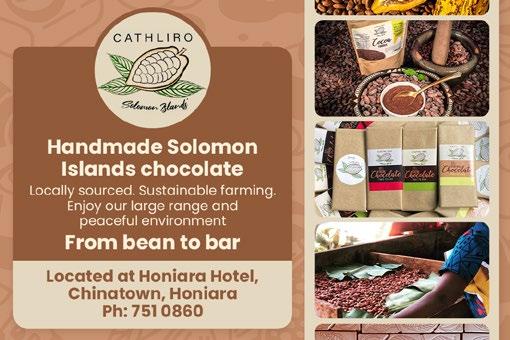
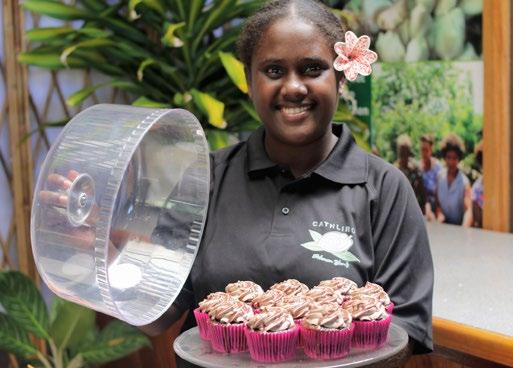
Thank you
Tanggio
Thank you very much
Tanggio tumas
Yes
Yia
No
Nomoa
Good / Excellent Gud tumas / nambawan
Good to see you Gud for lukim yu
I am pleased to meet you Mi hapi tumas fo lukim yu
Where is the post office? Wea nao Pos ofis ia?
What is your name? Wanem blo yu?
Where do you come from? Yu blo wea?
What do you do?
Wanem nao waka blo iu?
Wanem nao iu duim?
Where are you going? Yu go we?
Help!
Helpem mi!
Can i ask you a question? Mi save askem yu wanfala kuesten?
How are you?
Yu hao?
I am fine, thanks Mi oraet, tanggio tumas
Can I have one Solbrew please? Mi laekem wanfala Solbru plis
Would you mind waiting?
Hem oraet sapos yu weit
I walk Bae mi wokabaut
That’s right / That’s it Hem nao / hem stret

Diving in the Solomon Islands is an unforgettable experience, offering a rare combination of natural beauty and living history beneath the surface.
Scattered across the archipelago are coral reefs bursting with colour, deep drop-offs, mysterious caves, and a remarkable collection of World War II wrecks. Warm, crystal-clear waters and minimal crowds make this a dream destination for divers of all levels.
Beneath the waves lies an underwater museum — sunken ships, submarines, and aircraft, many of which have become thriving artificial reefs. Glide past coral-covered steel, schools of tropical fish, sea fans, turtles, reef sharks, and even the occasional dugong.
Near Honiara, Bonegi Beach offers easy access to the Hirokawa Maru and Kinugawa Maru wrecks, two Japanese transport ships that are now home to a rich variety of marine life. More adventurous divers can head to Tulagi to explore lava tubes, deep wrecks, and dramatic walls.
In the Western Province, Gizo and Uepi are standout destinations. Gizo is home to the impressive Toa Maru wreck and vibrant reefs like Grand Central Station, while Uepi Island sits on the edge of Marovo Lagoon and is known for its large schools of fish, reef sharks, and coral drop-offs. For something truly atmospheric, Mbulo’s Custom Cave and the lightfilled Mbulo Caves offer a magical cave diving experience.
Dive Operators
There are a number of dive operators available including liveaboards and land-based operators.
• Emperor Divers (Guadalcanal)
• Emperor Bilikiki (Liveaboard)
• Master Liveaboards
• Dive Papatura
• Dive Gizo & Adventure Sports (Western Province)
• Uepi Island Resort (Marovo Lagoon)
For more information, visit www.solomonislandsdiving.com
1. Bonegi Wrecks: Two Japanese WWII freighters just off Honiara, easily accessible as shore dives.
2. Twin Tunnels: Dive through ancient lava tubes and emerge onto a wall teeming with life.
3. Leru Cut: A dramatic underwater canyon illuminated by beams of natural light.
4. Mary Island: Known for schooling barracuda, jacks, and occasional oceanic mantas.
5. Toa Maru: A 130-metre WWII wreck near Gizo, with many preserved artifacts.
Recreational Shore Dives:
• Hirokawa Maru (0-23m)
• Kinugawa Maru (4-56m) (also a technical dive)
• Kyushu Maru (7-48m) (also a technical dive)
• I-1 Submarine (3-27m)
Recreational Boat Dives:
• USS Serpens
Top 10 Dive Sites important note
• USS Seminole
• HMNZS Moa (36-41m)
• USS Kanawha (35-61m) (also a technical dive)
• Bow of USS Minneapolis (6-14m)
6. Uepi Point: Famous for schooling fish, reef sharks, and vibrant coral gardens.
7. Mbulo Caves: Shallow, sunlit caves surrounded by pristine coral reefs.
8. Shark Point: Off Munda, one of the best places in the Solomons to see hammerheads.
9. Karumolun: A protected site with huge schools of fish, sharks, and incredible coral.
10. Kicha: Stunning hard corals, giant sea fans, and prolific fish life near Marovo Lagoon.
Technical Dives:
• Azumasan Maru (40-76m)
• Sasako Maru (60-90m)
• USS John Penn (45-60m)
• USS Aaron Ward (55-70m)
• Tama Maru (68-75m)
• USS Atlanta (90-130m)
There are many shipwrecks waiting to be explored. The depths of each shipwreck varies and it is important to note that not all of the wrecks can be dived.
HIJMS KIRISHIMA HIJMS FUBUKI
JAPANESE SUB I-3
JAPANESE SUB I-1
HIJMS HIEI Ve Urin Village
HIJMS AYANAMI
HIJMS TERUZUKI HIJMS TAKANAMI
SASAKO MARU
AZUMASAN MARU
KYUSHU MARU
HIROKAWA MARU
KINUGAWA MARU
YAMATSUKI MARU YAMAURA MARU
Prefix & suffix Meanings
HIJMS His Imperial Japanese Majesty’s Ship
Maru Japanse for ‘Circle’ or ‘Return’, means a wish for the ship to make a safe round-trip.
USS United States Ship
HMAS His Majesty’s Australian Ship
HMNZS His Majesty’s New Zealand Ship
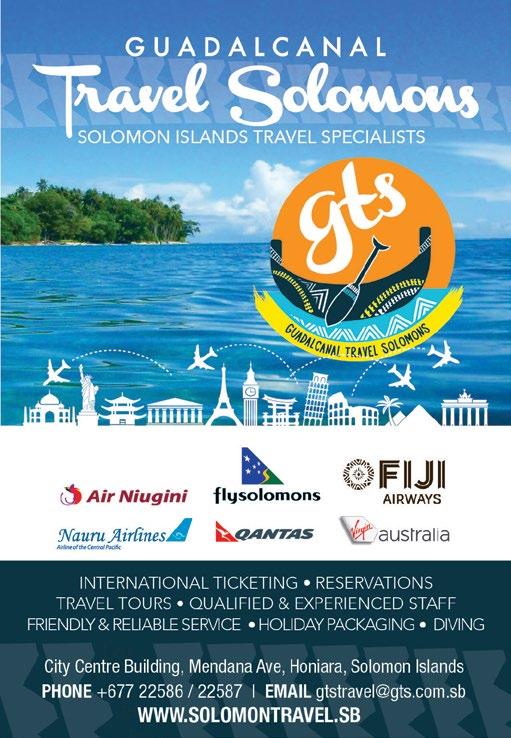





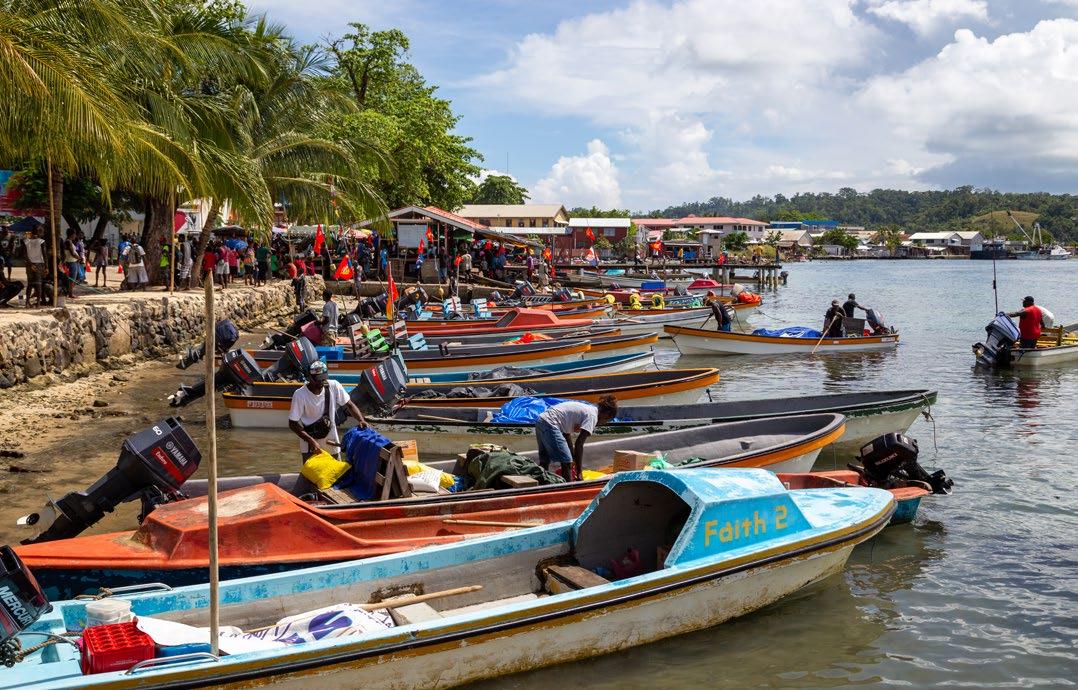
Located on Ghizo Island, Gizo is the capital of the Western Province. Today, Gizo is a renowned tourist hub boasting world class water activities.
Flights to Gizo, a short one-hour trip from Honiara, depart daily. Once you arrive in Gizo, it’s easy to travel to the many tourist destinations.
The western region offers some great snorkelling. Nusatupe Island, just off Ghizo where the airstrip is located, features a clam farm where you can snorkel for giant clams. Kennedy Island, the island that John F Kennedy swam to from the sunken PT 109, is a mecca for viewing beautiful coral and marine life. You can hire snorkelling gear from Fatboy’s and have the island virtually to yourself.
Gizo is a popular destination for diving. Toa Maru - a premier dive site in the South Pacific, Secret Spot, Grand Central Station and American Hellcat Fighter Plane are just a few of the exciting dives that can be undertaken in the region. For more information, contact Dive Gizo on (+677) 60 253.
While surfing is still relatively new to the Solomons, this doesn’t mean the waves don’t measure up. In fact, between November and April, waves swell to two metres and more. Pailongge on the south coast offers solid point surfing while closer to Titiana you can access a left hand reef break.
For fishing enthusiasts there’s plenty of reef and game fishing in the region. Haul in a catch of marlin, dogtooth tuna, Spanish mackerel, bass, giant trevally, just to name a few. Ask your accommodation establishment to recommend a fishing charter.
North east of Ghizo Island sits Kolombangara Volcano. Extending 1,770 metres in height, it takes around two days to trek. The hike offers spectacular views, but be mindful that the track is remote and steep.
South west, on Simbo Island, the volcanic landscape offers perfect conditions for megapodes to incubate their eggs. Trekking to the volcanic centre takes two hours through thick rainforest.
Fatboys Restaurant, Café & Bar
Fatboys Resort (+677) 744 3107
Nguzu Nguzu
Gizo Hotel, Middenway Road (+677) 60 199
SB Bar
Sanbis Resort (+677) 744 3109
Gizo offers visitors essential food supplies and has a butcher in town. The Gizo Market is open weekdays selling local produce and seafood, with some vendors operating on weekends. Dive Gizo has a gift shop, which is worth a look. An ANZ ATM and a Bank South Pacific with Western Union outlet are available in Gizo with free wifi at resorts and upmarket hotels.
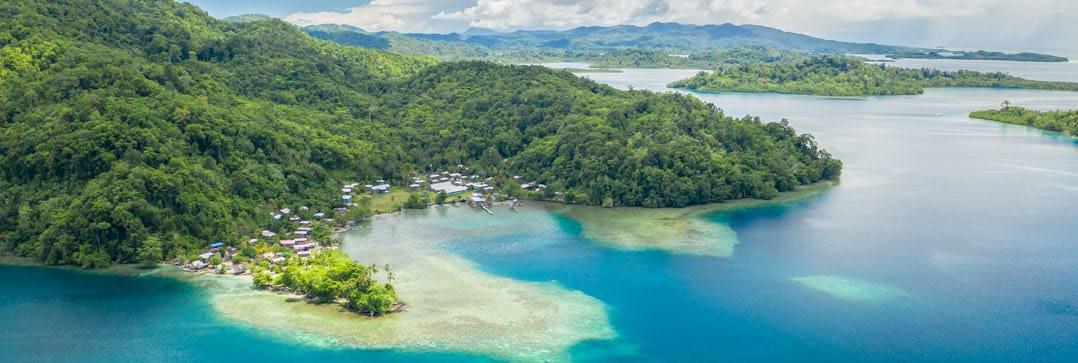
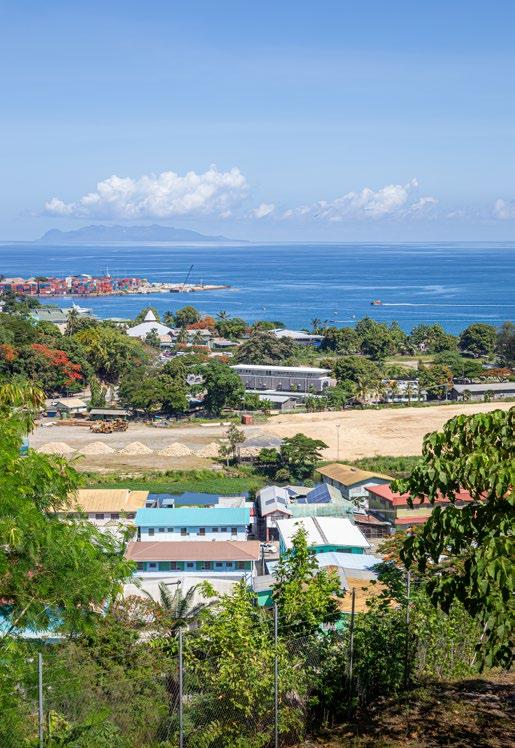
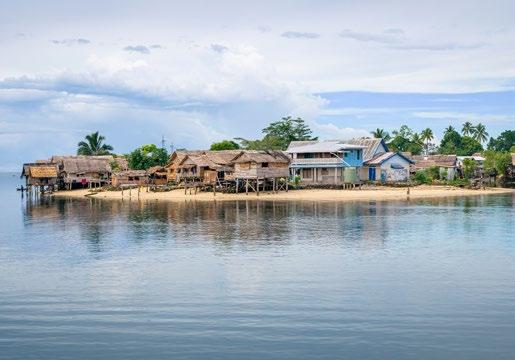
exploring
Getting around the Solomons is amazingly easy, despite the rawness of the country and the multitude of islands.
Just immediately out from west Guadalcanal, Savo Island is easy to get to and a great place to visit. This serene little place offers dolphin watching and some of the clearest waters in the world.
Although a peaceful paradise today, Savo was a place where fighting between naval forces occurred in WWII. On 8-9 of August 1942, the first naval conflict occurred and in the battle, Australia lost one of its ships and America three of its cruisers encouraging the Japanese invasion to continue on.
Savo is easily accessible by bananaboat (2 hours from Honiara) but for visitors, the easiest option is to ask at the SIVB office in Honiara. The SIVB can put you in contact with local transport and accommodation operators on Savo.
Visible easily from the coast in Honiara, the Florida Islands (also known as the Nggela Islands) played an integral part in the region’s war history as it functioned as the backdrop to the most pivotal battle in the area.
Tulagi which served as the nation’s capital until 1942, is the perfect place to embark on a WWII tour, and is also a popular diving location with wrecks USS Kanawha, USS Aaron Ward and HMNZS Moa in the vicinity.
Although you can get across to the Florida’s through local banana boat, be sure to travel out to the Florida Islands with a licensed operator to avoid any safety issues.
North of the Florida Islands is the province of Malaita where visitors can find local accommodation in a prisitine area. Malaita is probably most famed for its shell money which can still be used as currency today. Shell money holds significant value in local culture and is often used for bride price or as currency when making important cultural purchases.
You can travel to Malaita on Frantji Shipping which departs six days a week from Point Cruz. The travel time is just two hours and this is a fantastic way to spend a weekend if you have spare time.
Cloaked in rainforest and fringed with biodiverse reefs, Tetepare is the largest uninhabited island in the South Pacific, and home to a leading conservation project and locally-run ecolodge. The island’s beaches support nesting populations of three species of turtle including the endangered leatherback turtle. Other species inhabiting the island and surrounding waters include the dugong, the endemic Tetepare white-eye bird, hornbills, tiny pygmy parrots, huge bump-headed parrot fish, barracuda and pods of inquisitive dolphins.
To the north west of the Florida Islands, is the province of Isabel, the place of the first European landing in the Solomons. Although once a hot spot for “blackbirding” (the term given to the terrible practice of enslaving locals for export labor in centuries past), the region is now a peaceful and happy place where visitors are welcomed and treated as though they are royals.
You can fly out to Isabel with Air Solomons, or go by vessel with UTA Shipping (3 to 3.5 hours). The trip is well worth it and visitors will experience a step back in time. Imagine crocodile watching, discovering human skulls from days past, or listening to the unique panpipe concerts.
One of the largest provinces in the Solomons, Western Province is made up of eleven islands and is a great place for a short weekend getaway, or a month-long journey, depending on your desires.
Ghizo Island is a hidden gem in the Solomon Islands and flights to the township of Gizo are regular. Its just a short one-hour trip from Honiara and departs daily. Once you arrive in Gizo, it’s easy to travel to the many tourist destinations.
The Western region offers some great snorkelling.
Nusatupe Island, just off Ghizo where the airstrip is located, features a clam farm where you can snorkel for giant clams. Kennedy Island, the island that John F Kennedy swam to from the sunken PT 109, is a mecca for viewing beautiful coral and marine life. You can hire snorkelling gear from Fatboy’s and have the island virtually to yourself.
Gizo is one of the Solomon Islands’ most popular diving destinations. Highlights include the renowned Toa Maru, considered one of the top dive sites in the South Pacific, alongside other standout spots such as Secret Spot, Grand Central Station, and the wreck of an American Hellcat Fighter Plane. The diversity and quality of dives here are sure to impress.
For dive bookings and local expertise, contact Dive Gizo on (+677) 60 253.
Surfing in the Solomons is still relatively undiscovered, but the waves are world-class. From November to April, swells regularly reach two metres or more. On the south coast, Pailongge offers a solid point break, while near Titiana, surfers can access a reliable lefthand reef break.
For fishing enthusiasts there’s plenty of reef and game fishing in the region. Haul in a catch of marlin, dogtooth tuna, Spanish mackerel, bass, giant trevally, just to name a few.
For birdwatchers, San Cristobal is on the must do list. San Cristobal is very remote and although still very much untouched, it is easy enough to get there through Air Solomons. www.flysolomons.com
Visitors can hike the mountain range running down the centre of Makira Island or spot the nestings of the Pacific Ridley turtle which is prolific in this part of the country.
Good surfing can be had here too, but the island is very basic and visitors should be well equipped with mosquito nets and supplies. The remoteness of the area also makes it a mecca for fishing and a visit is well worth it if you have around four days to spare.
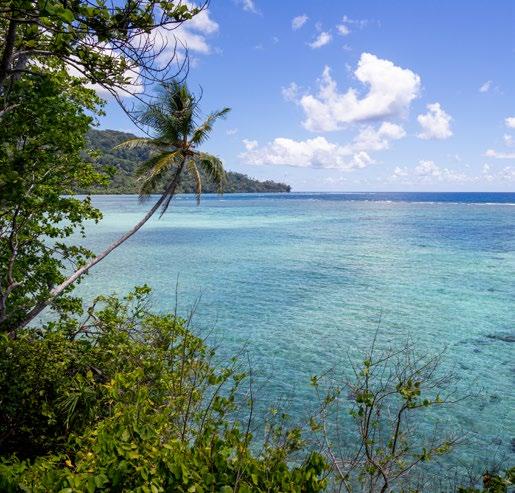
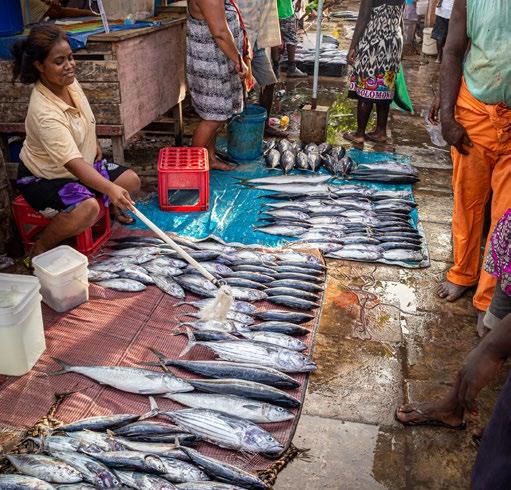
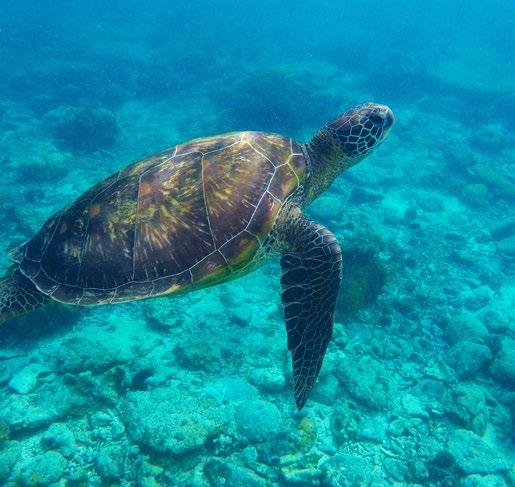






The Solomon Islands assert a harsh modern history, with WWII having a major impact on the region. Today visitors can visit the many battlefields across the Solomons to ascertain just how the final battle was won.
In August 1942, the United States (US) began its first land offensive in WWII. It was an American assault on the adjoining Solomon Islands and the Japanese-held island of Guadalcanal. US Marines stormed ashore on the 7th of August to win control of the new Japanese constructed airfield now known as Henderson Field and drive the Japanese from the Island of Guadalcanal. Guadalcanal was the most easterly advance by the Japanese as they tried to win control of the Pacific.
In an epic six month land, sea and air battle 38,000 soldiers, sailors and airmen from both sides lost their lives in the fighting. Victory or defeat, however, was in the balance several times with the US assaulting with newly trained troops against the more experienced Japanese Forces. The growing might of the US prevailed taking its Forces all the way to final victory against Japan.
That first step on the road to Tokyo took place on Guadalcanal, the most famous battle in the region ranked by many as the turning point in the war in the Pacific.
The US memorial on Hill 73 overlooking the Matanikau River provides a wonderful panorama of Iron Bottom Sound and the famous battle ridges - Galloping Horse and Sea Horse. This is basically in Honiara township, but you will need to ask a local how to get here. If transport is an issue, you can get in a taxi and it will cost less than SBD50 to get there but rest assured if you are interested in the war history, this is a must do.
Meanwhile the Japanese observation post on Mount Austen offers spectacular and tactical views overlooking Henderson Field and the Eastern Battlefields.
Nearby you can visit the battle site that took place on the 3rd of December 1942 between Japanese Forces and the famous Carlson’s “Gung Ho” Marine Raiders.
The Battle of Tenaru, enroute to Edson’s Bloody Ridge, was the first attempt by the Japanese to regain the airstrip (Henderson Field) and was the first major battle that took place on Guadalcanal itself.
Edson’s Bloody Ridge is the site where, on the 12th of September 1942, Japanese Forces led by General Kawaguchi attacked US positions on Hills 1 and 2 (Bloody Ridge) adjacent to Henderson Field.
Located just behind Henderson airfield. Very easy to find and reasonably well signposted. Just turn right at the large round about just past GTL Petrol station on the way to the airport. The road is a little rugged, but driveable with a good-sized vehicle. When you get to the T-intersection turn right and you will find both Hill number 1 and Hill Number 2.
The Battle for the Ridge is probably the best known and most famous battle that took place on Guadalcanal.

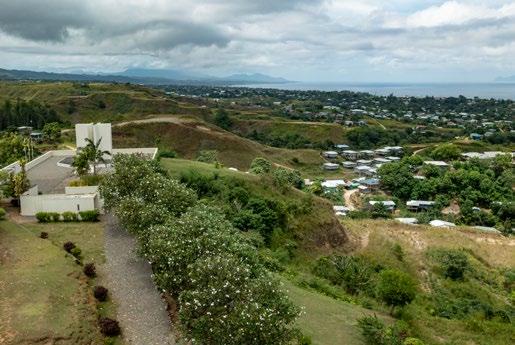
Crossing the twenty miles of Iron Bottom Sound to Tulagi, re-enact what can be regarded as the first step taken by US Forces on the long road to Tokyo. Visit the landing spots of the US Forces, which were fiercely resisted by the Japanese.
Snorkel over a Japanese Kawanishi flying boat just off the wharf at Gavutu or travel on to Purvis Bay and see the LST342, which broke in half after being hit by a Japanese torpedo. The floating front half was towed to Purvis Bay and beached.
Back on Guadalcanal, visit the area of Coffin Corner, Brigg’s Outpost, Fighter 1, Fighter 3 and the Crash strip. On the 25th of October 1942, the Japanese soldiers from the famous Sendai division using the Maryuma Trail attacked US positions defending this area. For two nights Chesty Puller’s 1st Battalion 7th Marines and the army’s 164th Infantry successfully held off possibly the most dangerous threat on the airfield.
Visitors can view the wartime front lines and the position where John Basilone earned his Medal of Honor, and then proceed on to Red Beach, the site of the Original Landing at Guadalcanal. On the 7th of August 1942, the 5th Marines and the 1st Marines landed on Red Beach and began the land battle of Guadalcanal. Additionally, visit Carney Field and the Koli Point area, scene of the November actions for the 7th Marines and 164th Infantry and the many Amtracks left after the war.
Tours of the battlefields are a must for visitors to the Solomon Islands, which range from brief two-hour tours to a full week-long tour. Tours can be organised through Tourism Solomons.
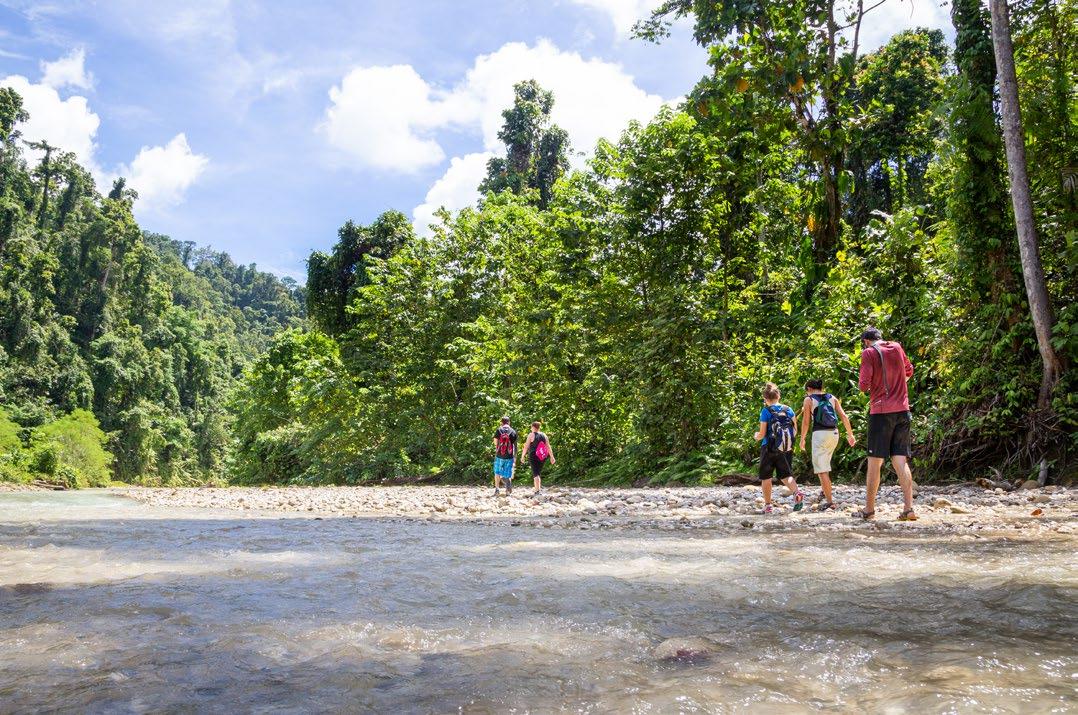
Trekking in the Solomons is a unique and exhilarating experience. The tracks and trails vary from easy flat walks to difficult hikes such as Mount Makarakomburu which towers at 2,447 metres.
If you have time and haven’t planned for any difficult overnight treks, take advantage of some readily accessible walks within a short distance of Honiara. Walks include Mataniko Waterfall and Water Caves, Tenaru Waterfall, Kahove Waterfall, Mt. Austen, Tina River, Bonege River and Savo Island.
The Mataniko River is a large river that passes under the Kukum Highway in the Chinatown area. The famous falls are found further inland and can be easily located by visitors. From Honiara, simply turn right at the roundabout, cross over the bridge and then turn right again to follow the river inland. You will need to ask for directions when you get further inland, but don’t worry as Solomon Islanders are always only too happy to give directions.
The Mataniko walk is not a stroll, so be sure to wear good footwear and pack snacks and a drink to ensure that you get the most from your experience. Mataniko Falls is a veritable oasis so once you arrive be sure to indulge in a cool swim, a slide on the rocks or just relax by the edge.
If you want to experience something a little more remote, then try Tenaru Waterfall. A 2 hour trek through the bush (each way), this waterfall is well worth a visit. The walk to Tenaru is fairly easy but there are a couple of river crossings, so check with locals before leaving as the river heights vary seasonally.
Tenaru is not easy to find and so employ a local to take you there. When you arrive at Tenaru, you will be enthralled by its 60 metre falls.
Kahove Waterfall (also called Trenches Creek Falls) is a little more difficult than some of the other walks that are local to Honiara. Nonetheless, these are not outside the realm of possibility for those that are reasonably fit. Drive out to Kakabona Police Station which is west of town and then ask some of the locals for a guide to assist you. Be sure to take your camera and remember to take wet weather protection as you will need to cross deep rivers, some of which will be slippery. Take a towel and change of clothes for when you return to your car.
For some genuine variation, Mount Austen and the Barana Cave and Waterfall are a real eye opener and they are still close to Honiara. Drive up the Mt. Austen Road past the Japanese Memorial and turn right when you see the Star of David. Follow the road to the end and ask the local villagers to assist you from there.
This walk involves some simple river crossings where you will have to go through ankledeep water. This little pocket of the Solomon Islands was made famous by “The Gifu” which was the name of the ridge where there was intense fighting between the US Army and the Japanese during WWII. Today, the Barana Village stands on the western edge of The Gifu and many war relics can be found in the area. Be sure to take a torch so that you can explore the Barana Cave and the many fox holes dug out during battle.
Just east of Honiara, the Panatina Ridge trail is a 4.7km loop popular with local walkers and those wanting a gentle introduction to hiking in the Solomon Islands. It takes around 1 hour and 10 minutes to complete and is considered easy, offering pleasant views of the surrounding hills and coastline. The trail is usually quiet, making it ideal for a peaceful walk in nature.
One of the best-known hikes near Honiara is the trek to Mataniko Falls, located in the hills above Lelei Village. The area is steeped in history, this was a key battleground during the Guadalcanal campaign of WWII. You’ll often see war relics along the trail. The hike takes about two hours one way and involves river crossings, rocky terrain, and steep sections, so moderate fitness is required. Once at the falls, you’ll find inviting swimming holes and caves to explore. During the wet season, it may even be possible to float back to the village along the river.
Roughly 20km east of Honiara near Vura Village, the Borare Cascades offer a more accessible but equally beautiful hike. From the roadside parking area, it’s about a one-hour walk to reach the cascading rock pools. These are perfect for a refreshing swim and a picnic, ideal for a half-day outing.
One of the most breathtaking multi-day treks in the Solomons is along the Gatokae Weather Coast on Gatokae Island, in the Western Province. This 3-day, 2-night trek (accessible via Seghe and then boat transfer) takes you through some of the most dramatic and remote landscapes in the country. Towering 900-metre mountains drop into the ocean, and the route passes through dense jungle, waterfalls, traditional kastom sites, and remote villages.
You’ll stay in village guesthouses each night, gaining a deep insight into Solomon Islands culture and oral history including tales of headhunting. On some nights, you may even catch a glimpse of Kavachi, an active submarine volcano, as it lights up the horizon with bursts of lava (from a safe distance, of course).
The Solomon Islands are strikingly mountainous, and adventurous hikers can explore both extinct and active volcanic peaks.
Mount Mariu, also accessible from Seghe in the Marovo Lagoon region, is a challenging 3- day, 2-night hike that ascends through gardens and misty rainforest to a summit at about 730 metres. The final section leads into a moss-draped cloud forest, and the views over the lagoon are nothing short of spectacular. Due to heavy rains, the hike is best undertaken outside the peak of the wet season, typically from mid-October to mid-June. This trek demands a high level of fitness.
Solomon Airlines offers regular flights from Honiara to Seghe, followed by boat transfers to local accommodations.
For experienced trekkers, the remote and dramatic Tinakula Volcano in Temotu Province offers a rare chance to hike near one of the Pacific’s most active volcanoes. Rising steeply from the sea, this uninhabited volcanic island requires charter arrangements and local guidance. Two weekly Solomon Airlines flights connect Honiara with Lata (Santa Cruz), from where boat transfers can be organised.
On Kolombangara Island, in the Western Province, you’ll find one of the most rewarding volcanic hikes. This perfectly circular, extinct volcano rises over 1,700 metres and is known locally as the “Water Lord” due to its high rainfall. Hikes here pass through dense jungle and mossy cloud forests, with rivers and waterfalls that appear and vanish with the rain. Local communities offer guiding services and basic accommodation. Fly with Solomon Airlines to Gizo, then travel by fast boat to Ringgi Harbour.
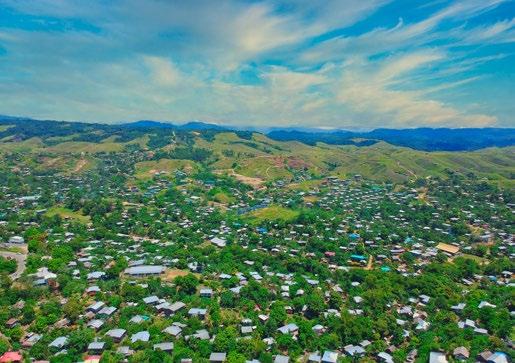
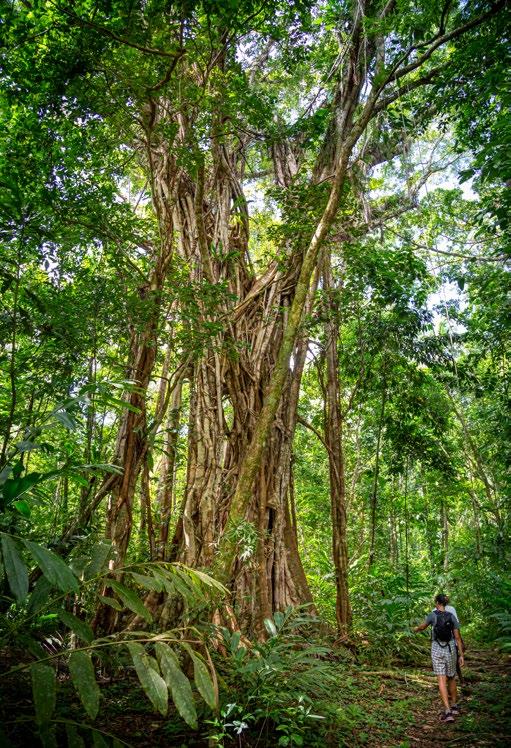
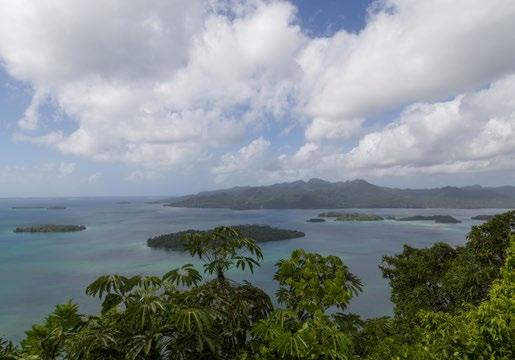
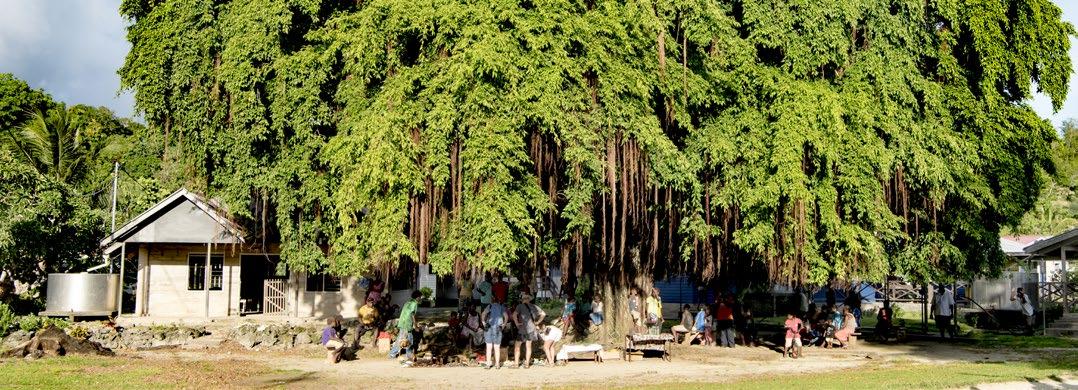
January
Surfing Competition Western Province
February
Choiseul Province Second Appointed Day
April
Easter Celebrations
PCYC Fishing Competition
Rotary Fun Run
Makira Marathon
May
World Tuna Day
Wagosia Festival
June
Isabel Province Second Appointed Day
Temotu Province Second Appointed Day
King’s Birthday
Central Islands Province Second Appointed Day
Tulagi Challenge
July
Solomon Islands Independence Day
Rennel & Bellona Province
Second Appointed Day
Melanesian Arts & Culture Festival
(held every 4 years)
Tinakula Festival of Arts and Culture
August
WWII Commemoration
Shell Money Festival
Guadalcanal Province Second Appointed Day
Malaita Province Second Appointed Day
JFK Event
Makira-Ulawa Province Second Appointed Day
Battle of Guadalcanal Anniversary
Operational Watchtower Blue Beach Anniversary
Papatura Fishing Competition
Fly Solomons Peace Marathon
October
Solomons Dive Festival
Stunned Mullet Fishing Competition
november
Solomons Fashion Week
december
Roviana Lagoon Festival
Western Province Second Appointed Day
Christmas Celebrations
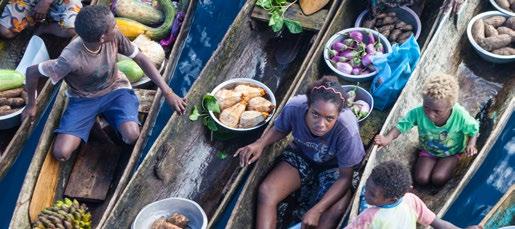
Honiara Central Market
The largest and busiest market in Honiara, offering a wide variety of fresh produce, seafood, flowers, clothing, and local crafts. It’s a vibrant hub of daily life and commerce.
Hours: Monday to Saturday, 6:30am - 6:00pm (closed on Sundays)
Location: Mendana Avenue, on the waterfront near the city centre
Honiara Craft Market Centre
Located near the National Art Gallery, this market specialises in handmade crafts, including carvings, woven baskets, jewellery, and traditional art. It’s an excellent place to find authentic souvenirs and support local artisans.
Hours: Monday to Sunday, 8:30am - 5:00pm
Location: On the grounds of the National Art Gallery, Mendana Avenue
White River Market
Situated in West Honiara, this market offers fresh produce, seafood, and cooked local meals. It’s a more grassroots experience of market culture in Honiara.
Hours: Open 24 hours daily
Location: White River area, west of central Honiara (along the road to Tanaghai)
Kukum Market
A vibrant local market offering a different assortment of fruits, vegetables, and seafood. It’s an excellent opportunity to engage with locals and gain insights into the everyday life of Honiara.
Hours: Typically open during daylight hours; exact times may vary
For the most up to date Calendar of Events and dates, go to www.visitsolomons.com.sb/things-to-do/events
Location: Kukum area, east of central Honiara near the Kukum Highway
Royal Solomon Islands Police Force
Rove Headquarters, Tandai Highway, Honiara
Non-Emergency Response
General Enquiries
Hospital
Kilu’ufi Hospital, Auki
National Referral Hospital, Honiara
Gizo Hospital, Gizo
Helena Goldie Hospital, Munda
MEDICAL
Honiara International Medical Centre
(+677) 23 666
(+677) 23 800
(+677) 40 275
(+677) 23 600
(+677) 60 224
(+677) 62 112
(+677) 38 346
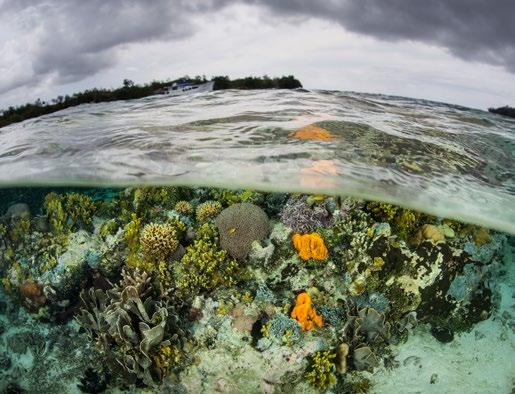
Prince Philip Highway
Honiara Private Medical Center
Unit 3, Nambawan Delite Center, Prince Philip Highway, Ranadi
TRANSPORT
Avis / Ela Motors
Prince Philip Highway, Ranadi, Honiara
(+677) 763 0143
(+677) 30 314 or (+677) 24 180
Solomon Airlines 177 or (+677) 44 999
Money
There are modern ATM facilities at the major banks in downtown Honiara, as well as in other parts of the Solomon Islands; however, it is wise to check locally if you are going to a remote area and intend on drawing out funds. Major tourist businesses accept credit cards but you will need to use cash everywhere else.
ANZ, BSP, Pan Oceanic Bank, Bred Bank and the Central Bank of the Solomon Islands will exchange money from most major currencies. The CBSI has a number of branches/agencies throughout the Solomon Islands but only its branches will exchange traveller’s cheques.
Visitor Information Centre
S.I. Visitors Bureau – Tourism Solomons
(+677) 22 442 Mendana Avenue, Honiara www.visitsolomons.com.sb
Educate yourself about tsunamis.
Refer to signposts throughout the region.
For up to date information, go to www.met.gov.sb
Take official tsunami warnings seriously.
Be aware of natural signs
• Strong earthquakes
• Loud roaring sounds
• Receding sea water
• Odd animal behaviour
If a tsunami is approaching
• Do not stand near the shore to watch it.
• Head inland or seek higher ground immediately avoiding roads.
• Leave belongings behind.
• If you can’t leave your building, move to a higher level /roof.
• Do not return to low lying areas until an official “all clear” has been given.


